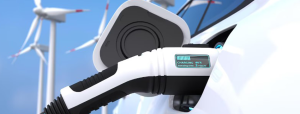
Women TechEU
Women TechEU: Empowering Women in Deep Tech Carolina AragonesesSettings About the Women TechEU scheme The Women TechEU programme is a continuation of the Women TechEU
Companies moving towards a circular economy model have access to subsidies and grants provided by the European Union.
Making environmental protection and cost savings compatible in business is not only possible, but must be assumed as a cause and effect relationship. The linear economic model used so far, whose philosophy is based on production, consumption and disposal, encourages a culture of waste and, consequently, environmental degradation.
In this way, moving towards a model of a circular economy, in which the value of products, materials and resources is maintained in the economy for as long as possible, and in which waste generation is reduced to a minimum, represents a competitive advantage for companies.
The head of EuroFunding’s Energy Efficiency and Sustainability unit, Enrique Roca, points out the numerous initiatives that companies can incorporate to make their process more sustainable and reduce costs. “A company that generates sludge derived from the treatment of its process water could consider valuing it at an energy level in order to use it as fuel, thus reducing natural gas consumption”.
Another example is the purchase of electricity from renewable sources. In particular, some traders offer electricity produced exclusively from renewable sources at a similar or even lower cost than other traders.
On the other hand, we explain how the European Union is very aware of climate change and environmental degradation and therefore has established a European Green Pact for all its member countries.
The goal of this pact is to achieve a clean economy, with zero emissions, and to protect the natural habitat in order to improve the well-being of people, companies and to take the lead in climate action around the planet.
It aims to transform the EU economy into a fully sustainable one, bringing about a change in the European Union’s social and economic model, providing time the economic resources to allow a just transition.
The European Green Pact includes a series of actions to boost the efficient use of resources covering all sectors of the economy, with particular emphasis on those that produce the most emissions, such as transport, energy or industries.
260 billion of additional annual investment will be required to meet the climate targets currently set for 2030, so
will require both private and public sector collaboration and will mean that at least 25% of the European Union’s budget will have to be allocated to action against climate change. The European Commission aims to be even more
and reduce emissions by 50-55% by 2030.
The most important thematic priorities in the field of energy, environment and sustainability of the resources associated with this compact are aligned with the main European strategic agendas and in a very summarized way are listed below:
Montserrat Cotelo has more than 15 years of experience in project management of continuous improvement in Euro-Funding. Within this new Pact it makes special mention of the new packaging specifications. She explains that a legislative proposal is underway for next year 2021 to strengthen essential product requirements and reduce over-packaging.
They will not only be based on weight or material, but will also take into account the recyclability, durability, reparability and reusability.
An example of measures implemented by companies are those that are intended to reduce the carbon footprint as the material lightening (under carbon), bio-based or low-impact materials, the conversion of glass and can material and the implementation of programs for the reduction of Greenhouse effect.
Cotelo also explains that there are other companies that aim to increase recyclability product through improving the recyclability of existing infrastructure and emerging, evolving into recyclable monomaterials or removing the thin film of aluminium, PET, PA, PVC, PVDC, etc. in flexible multilayer packaging.
To explore the compostability and biodegradability of plastic packaging, the companies explore new technologies and research applications for biodegradability and to facilitate the composting of food waste.
Finally, companies seeking to increase post-consumer recycled content consumer, expand recycling applications, explore technology and associations, ensure regulatory compliance (e.g. contact with food) and develop post-consumer recycling options from recycling advanced / chemical.
As far as Spanish legislation is concerned, companies are being heavily penalised for not aligning themselves with sustainable purchasing or otherwise favouring the use of recyclable material.
As an example, there is the ECOTASA PET PE which has increased this year 2020 by 57% over the previous year, if we compare this ecotax with the monomaterial PE we see that the difference is 70% that taken to product cost can mean a saving of 9% s / total.
Finally, it should be noted that there are subsidies with effect incentives that allow Spanish companies to make profitable projects of energy efficiency and sustainability. A good example is the Climate Project (aimed at reducing greenhouse gas emissions) and the aid for improving energy efficiency granted by the Institute for Energy Diversification and Saving (IDAE).
There is also regional aid for the promotion of the circular economy and the reduction of waste. Others are the imminent aid for the generation of thermal and electrical energy from renewable sources. These will give a significant boost to both the industrial and residential sectors, using different energy sources such as biogas, biomass, wind, hydro, geothermal,
aerothermal, hydrothermal, solar thermal and photovoltaic.

Women TechEU: Empowering Women in Deep Tech Carolina AragonesesSettings About the Women TechEU scheme The Women TechEU programme is a continuation of the Women TechEU

The new European Alternative Fuels Initiative is launched Matteo PresaccoSettings The EU has just introduced the second wave of Connecting Europe Facility (CEF) Transport –

How to maximize success in EU grants management? Chiara AssirelliSettings UNDERSTANDING EU GRANTS Managing European Union (EU) grants effectively is crucial for organisations aiming to
